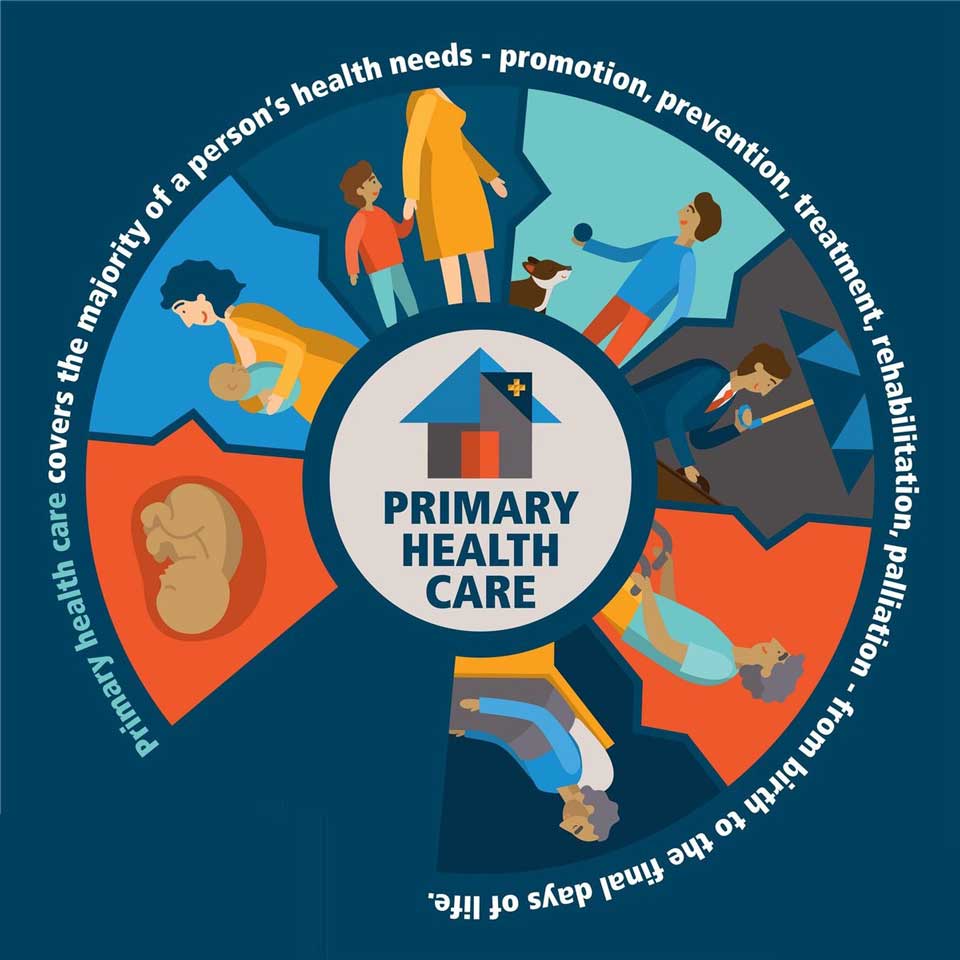What is Primary Care?
Primary care is the initial point of contact between a patient and the healthcare system that offers individuals access to the information and resources they require for optimal health outcomes.
Primary healthcare professionals generally work with many patients and have broad knowledge about various physical, psychological, and social ailments that might affect their patients.
Aim of Primary Care
The main objective of primary care is to improve the health of the public by providing easy access to medical care. It also focuses on the whole individual rather than on the illness of a particular organ, system, or disease. It aims to improve their entire health and wellbeing by preventing or solving any health problems that might be present or potentially present.
According to the World Health Organization (WHO), there are numerous key roles that primary care practitioners fulfill in their pursuit of this goal. These include :-
- Providing a broader coverage of health care
- Prevention of social disparities in health care
- Organizing health services to meet health needs
- Helping to make health and health care a part of public policy in all spheres
- Helping to train leaders in effective health care
- Increasing the level of participation of all those who have a stake in health, whether patients, physicians, public health workers, or those in the allied health services
Primary care practitioners are responsible for the ongoing health of their patients by preventing, diagnosing early, and managing frequent health conditions. An important aspect of their work is making referrals to specialists as and when required.
They are also in a unique position to understand and study the natural course of the disease, the family setting in which the patient is placed, and to treat and follow up on chronic or recurrent health conditions.
Benefits and Challenges of Primary Care
When implemented correctly, primary care is very beneficial for the health of patients and also lowers the financial burden on the public health system. This is partly due to fewer hospitalizations and less need for secondary and tertiary healthcare services.

Other benefits of primary health care are :-
- Increased access to healthcare services
- Improved quality of health care
- Focus on preventive health
- Early intervention to prevent health problems from developing
- Improved patient relationships
- Reduced need for specialist care
- Economic benefit in the form of numerous linked jobs
Although, there are also a number of barriers that inhibit the benefits of primary care. A shortage of primary care physicians is a significant challenge, and the demand for new practitioners is nowadays growing at a faster rate than the supply. In addition to this, the quality of care is variable between different practitioners, regions, and countries.
After-hours care is typically offered in less than half of primary care centers.

Types of Primary Care Providers
There are many types of primary care providers who are responsible for the ongoing healthcare of patients. Each of them is capable of acting as a point of entry for the patient into the health system for advice or referrals.
- Primary care physician
- Nurse practitioner
- Family practice doctor
- Internal medicine doctor
- Gynecologist
- Obstetrician
- Geriatrician
- Pediatrician
Each of these practitioners typically has a specific patient group with which they are most suited. They have a deeper knowledge of the health conditions that frequently affect these patients.
The primary care physician or general practitioner is the most common type of primary healthcare provider, and has the most general knowledge of patient diseases, along with the widest variability in their patients.

It is important to note that non-primary care physicians do not offer the same degree of comprehensive and ongoing care as they relate to specific medical specialties. Primary care providers who are not physicians do offer some services at first contacts, like dietetic and lifestyle changes for diabetics and cardiac patients.
But they function best as part of a team involved with primary health care.
Patient-Practitioner Relationship
The presence of trust between a primary care practitioner and the patient is crucial to maintaining a strong relationship and getting the most benefits from primary care. As the primary care practitioner is the point of entry for the public into the health system, patients should feel comfortable discussing any signs or symptoms that they might be experiencing.
They should be free to share the complications and side effects of any treatment they are taking. They should also be prepared to accept advice and recommendations from their practitioner accordingly.
It should be noted that each practitioner has a unique way of interacting with patients, and so individuals might need to try several physicians before finding one that they are happy and comfortable working with on improving their health and wellbeing.

If you or anyone you know is suffering from diseases or injuries, our expert providers at Texas Specialty Clinic will take care of your health and help you recover.
Call us at (469) 545-9983 to book a telehealth appointment for a home check-up.

